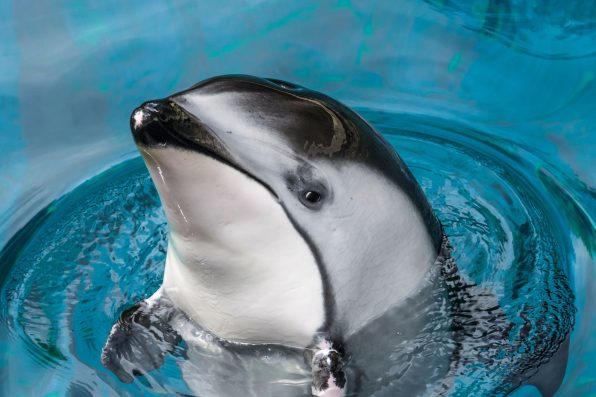Over 100 Dolphins Got Stuck In The Herring River, Marking The Largest Mass Stranding Incident On Cape Cod In Decades

On June 28, bystanders reported that around 10 Atlantic white-sided dolphins were stuck in the shallow waters of the Herring River at a beach in Wellfleet, Massachusetts.
But, when officials from the International Fund for Animal Welfare (IFAW) arrived, they found the number of stranded dolphins was around 125.
According to the organization, it is the largest mass stranding incident they’ve seen on Cape Cod in the 26 years they’ve been working there. Previously, the biggest rescue involved 45 animals.
By the time rescuers made it to the beach known as Great Island, 10 of the dolphins were dead. Luckily, they managed to successfully save more than 100 dolphins in total.
“We arrived to what appeared to be 80 to 100 dolphins on the shallow mud flats of Wellfleet’s Herring River ‘Gut’—a global epicenter for mass strandings,” Misty Niemeyer, the IFAW stranding coordinator, said. “We were able to provide supportive care, help those that were struggling, and keep them comfortable and ready for the incoming tide.”
Strandings are not an uncommon occurrence in Cape Cod. Each year, up to 30 dolphin rescues are performed in the area. This species of dolphin measures about eight to nine feet in length and weighs 360 to 505 pounds, putting them on the smaller side.
They can become stranded if they are disoriented, which can be caused by underwater noise pollution, per the National Oceanic and Atmospheric Administration (NOAA).
Overall, it took 150 people and 12 hours to guide the dolphins away from the shore and back to safety. The rescuers initially entered the water on foot to encourage the dolphins’ movement into deeper waters. Then, they switched to using boats when the water returned to high tide at around 5 p.m.
Other rescue groups, including AmeriCorps of Cape Cod, the New England Aquarium, the Center for Coastal Studies, Whale and Dolphin Conservation, and the Wellfleet Harbormaster, worked with IFAW to save the dolphins.

Luis – stock.adobe.com – illustrative purposes only, not the actual dolphin
“This rescue had many challenges due to the number of dolphins, the large size of many of the animals, how spread out they were over a large area, the difficult mud conditions, and the complicated locations from which we could reach them,” Niemeyer said.
There were also a bunch of oyster shells on the ocean floor, and their sharp edges could cut the animals.
The rescuers had to keep them lying on their bellies while they waited for the tide, which wasn’t always easy to do since the dolphins often moved around.
Most of the dolphins had returned to deeper water by sunset. Only 10 to 15 dolphins remained, and they made their way out of the shallow water the next day.
The IFAW team tagged the dolphins so they could monitor which ones survived the traumatic incident in the days that followed.
The NOAA states that if a sick, injured, dead, or stranded marine creature is spotted, it should be reported immediately.
Sign up for Chip Chick’s newsletter and get stories like this delivered to your inbox.
More About:Animals





